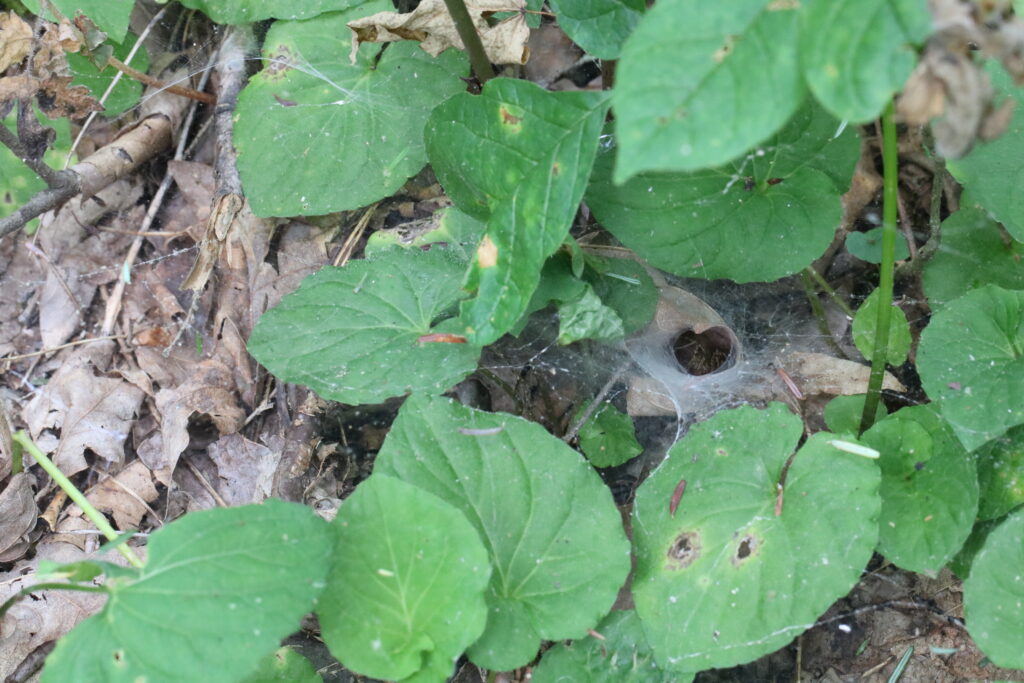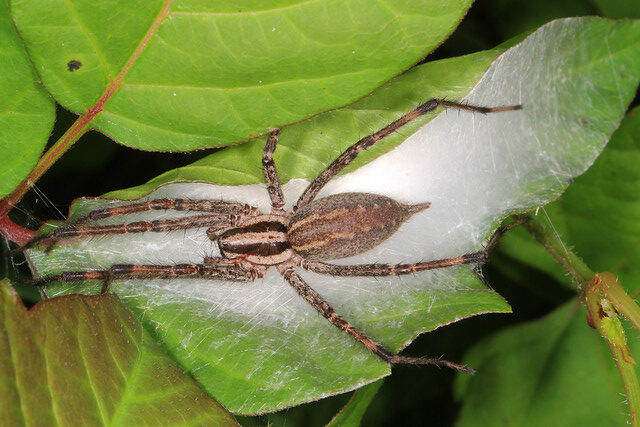#Arachtober: Funnel Weaver Friday
It’s Friday, so let’s celebrate some of our local spiders that make pretty intense webs: funnel-web spiders (Agelenidae).

At the time of this posting (Oct 2022), ten species of Agelenids have been identified in Maryland. Agelenids typically build a a horizontal, sheet-like web with a funnel on one side (hence their common name). Like most other spider species, females are in charge of building and tending to the webs. To create these dense webs, this group of spiders typically have large spinnerets that extend past their abdomen. While the webs are large, they usually are not sticky. The reason? The funnel is designed to attract unsuspecting critters seeking refuge. As they explore the web and move towards the funnel, the female lays in wait until it’s time to grab her quarry. Because of this, funnel web spiders are speedy, and the giant house spider once held the Guinness title for the speediest spider.

Being fast and using ambush tactics, female Agelenids can be a mighty force. Male Agelenids have to tread lightly to avoid becoming a meal. Research on Tegenaria atrica has shown that virgin females exhibit less cannibalism than their mated counterparts. A similar pattern was observed in Hololena curta (see figure below). In Agelenopsis aperta, males have been observed using courtship rituals that involved some fancy dance moves and web-plucking that actually put the females into a cataleptic state which he took advantage of to mate with her to avoid becoming a meal.

Local funnel weaving spiders can be difficult to identify, so many get lumped into the Agelenopsis sp. category. At least one species of funnel weaving spider, the barn funnel spider (Tegenaria domestica) is not native to Maryland and hails from Europe. Some of its ID characteristics can be found on BugGuide. Typically, Agelenopsis like to create webs in grass and bushes while Tegenaria in flower beds, wood piles, and around structures. Tegenaria webs tend to mostly contain the funnel portion while Agelenopsis often have more extensive webbing extending past the funnel.